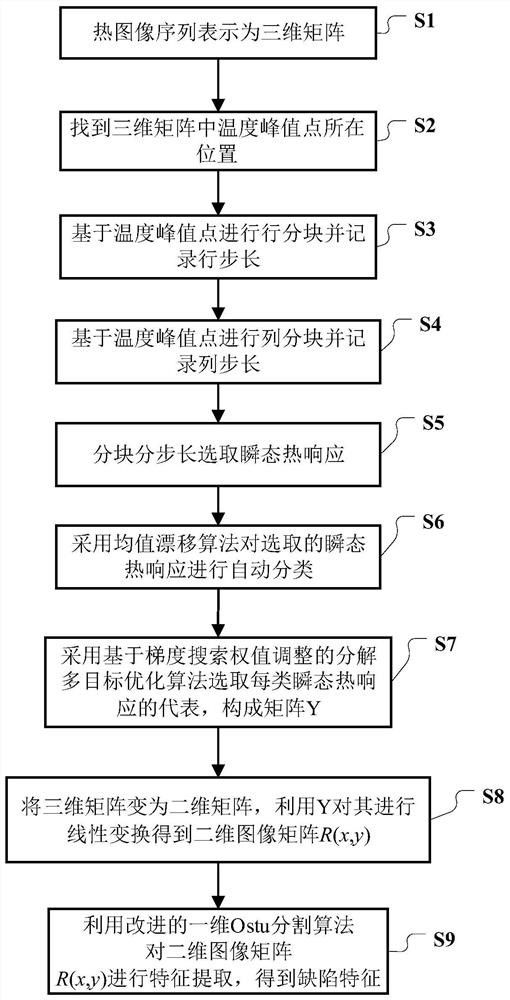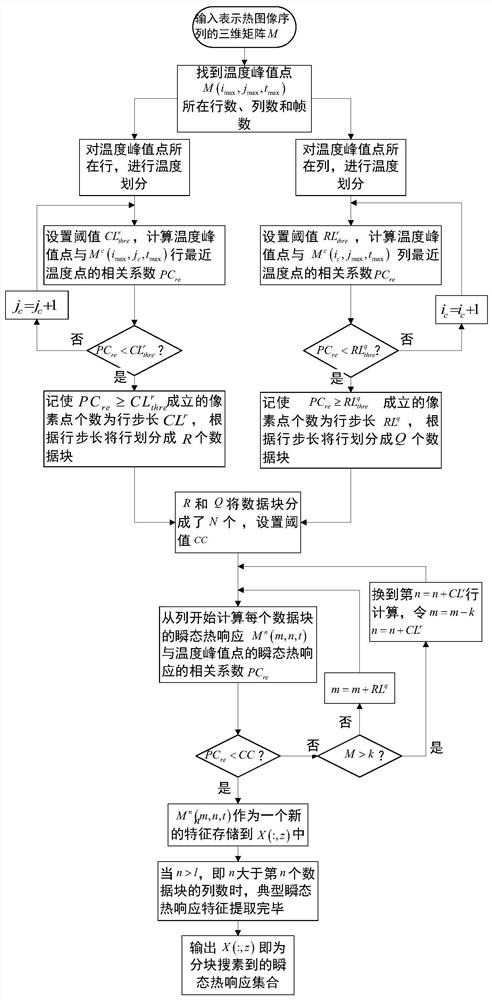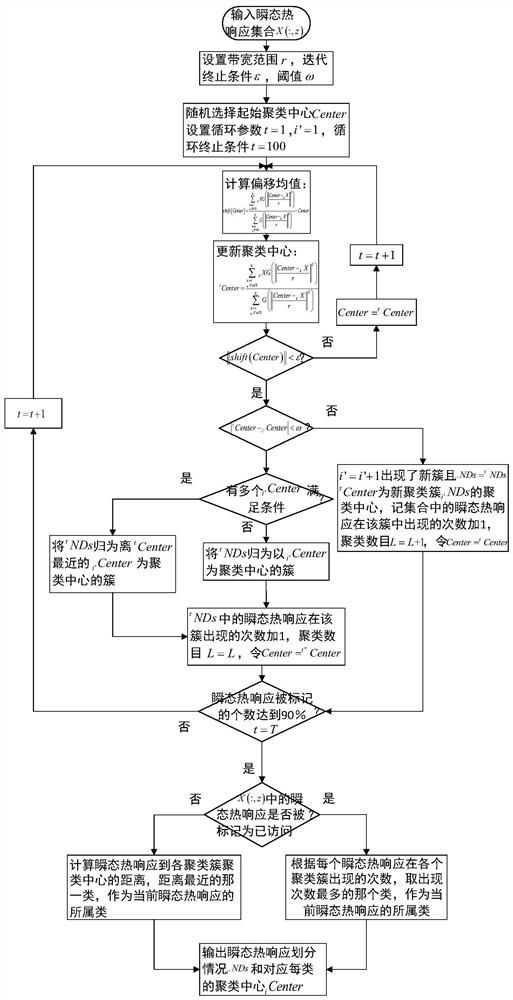Reusable spacecraft surface impact damage feature recognition method
A feature recognition, spacecraft technology, applied in character and pattern recognition, instruments, image data processing, etc., can solve problems such as affecting algorithm convergence, algorithm failure, and no solution.
- Summary
- Abstract
- Description
- Claims
- Application Information
AI Technical Summary
Problems solved by technology
Method used
Image
Examples
Embodiment
[0247] In this embodiment, there are two kinds of defects on the test piece, that is, the flat-bottomed hole defect 1 visible on the surface and the internal defect 2 invisible on the surface.
[0248] In this embodiment, the results of classifying the selected transient thermal responses using the mean shift clustering algorithm are shown in Figure 4 shown.
[0249] Three known temperature points are directly extracted from the thermal image sequence of the specimen, namely, the transient thermal response curves of the temperature point of the material itself, the temperature point of defect 1, and the temperature point of defect 2, respectively denoted as Bac POINT, Def1 POINT and Def2 POINT, such as Figure 8 , Figure 9 , Figure 10 shown.
[0250] Using the existing method of selecting transient thermal response representatives based on differences, three transient thermal response representatives are obtained: A NK 4 , B NK 50 as well as c NK 5 , they respec...
PUM
 Login to View More
Login to View More Abstract
Description
Claims
Application Information
 Login to View More
Login to View More - R&D
- Intellectual Property
- Life Sciences
- Materials
- Tech Scout
- Unparalleled Data Quality
- Higher Quality Content
- 60% Fewer Hallucinations
Browse by: Latest US Patents, China's latest patents, Technical Efficacy Thesaurus, Application Domain, Technology Topic, Popular Technical Reports.
© 2025 PatSnap. All rights reserved.Legal|Privacy policy|Modern Slavery Act Transparency Statement|Sitemap|About US| Contact US: help@patsnap.com



